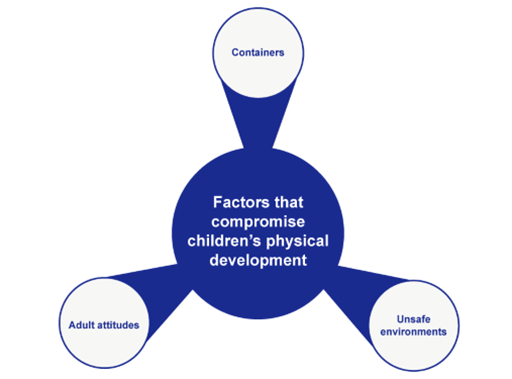2.4 Compromising children’s physical development
You are now going to explore some factors that are known to compromise children’s physical development.
Containers
Extended time sitting in ‘containers’ or sitting devices prevents children from experiencing the essential spontaneous movements like wriggling, stretching and bouncing that help strengthen all the muscles that support the spine. Muscle strength is vital to ensure the hips and shoulders are in the correct position for children to start crawling and walking. Lots of short or incidental opportunities to move throughout the day allow children’s bodies to continually realign and practise postural control.
Unsafe environments
Many children live in environments that are not safe enough to practise their movement skills. It is important to recognise this and provide alternative/appropriate environments whenever and wherever possible for children to move and play freely.
Adult attitudes
For a range of reasons, some adults may not be properly supportive of their children’s need to move on a daily basis. This may emerge in the way they talk about their children’s physical abilities or in a lack of interest in sourcing opportunities for their children to be active.
Activity 5
Talk to your friends, colleagues and family members and discuss how the factors that support and compromise children’s physical development may be present in your environment.
Have you experienced or seen any of the factors that support or compromise children’s physical development?

